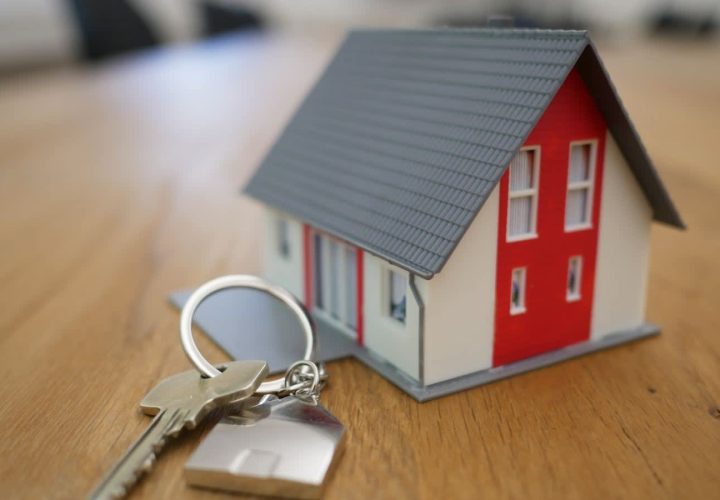
The 8 Best Property Investment Strategies in Australia
You must understand this – Buying a property is not an investment strategy.
However, investing in property with the right property investment strategy can be both lucrative and rewarding.
Planning is bringing your future into the present so that you can do something about it now.
That means that creating a property investment strategy is the first essential step when you set out on your property investment journey.
You need to document a proven property investment strategy that aligns with your risk profile, your goals, your likes and dislikes, your income and outgoings and your assets and liabilities and your time frame.
Launching yourself into property investment without a strategy in place, and without knowing the stakes or understanding the pros and cons can really be a recipe for financial disaster. People that do this end up saying a bought and investment property and it didn’t work as I had hoped. So I need to get out of it. That is working with no plan and no strategy.
On the other hand choosing exactly what strategy works for you can be a daunting task.
You can profit from real estate in one of five ways, and if you get the combination right you’ll make money from bricks and mortar.
They are:
- Capital growth – To build yourself a sound asset base your properties will need to appreciate in value at wealth-building rates. This will come from strong demand from owner-occupiers (who push up property values) and tenants (who help you pay your mortgage.)
- Cash flow – In other words your rent.
- Tax benefits – While you should never invest solely for this reason; a good tax strategy can help you manage your cash flow, decrease your tax obligations and increase your bottom line.
- Accelerated growth – What can you do that others are not doing to add value?
- Inflation – Property investors have learned it’s too hard to make money using your own money. Instead, they have learned to use other people’s money to leverage and gear. In other words, they take on a mortgage. However, over time inflation erodes the value of the mortgage. For example, take a $400,000 mortgage on your $500,000 property today – in 10 years time your property could be worth $1 million and you still have a mortgage of $400,000 (assuming interest-only payments) however in 10 years’ time your $400,000 won’t be worth as much as due to inflation.
6 best property investment strategies people use
1. Negative gearing property investment strategy
Put simply; gearing means that you have borrowed money to buy your investment property.
There are two types of capital strategies when it comes to gearing – negative gearing and positive gearing.
A property investment strategy using negative gearing usually involves buying a property in a high capital growth suburb, but where the net rental return is lower than the cost of holding the property.
In other words…you make a cash flow loss.
Running at a loss is not an ideal situation, but in terms of Australian tax law, it’s not actually all that bad.
That’s because the Australian Tax Office (ATO) allows property investors to deduct any losses they make on their investment property from their ordinary taxable income.
2. Positive gearing property investment strategy
Positive gearing is the second type of gearing-related strategy.
This is when, instead of making a loss, the income from a rental property covers the expenses incurred in holding the property and delivers some extra cash flow.
In other words, you are making a profit from your investment property, and you have the added benefit of the option of using some surplus income to reduce the size of your loan.
3. Using equity to buy an investment property
This property investment strategy involves using the equity from your home (or other investment properties) to help buy your next investment property.
Put simply, equity in a property is the difference between the current market value of your property and how much you owe on it.
Here’s an example: If your home is worth $800,000 and the current debt on your home loan is $500,000, then you have $300,000 worth of equity in your house.
So while you may have thought of your home as a never-ending series of monthly loan repayments, with every payment you make you are building up your equity and over the last couple of years, with the market pushing property values, your home equity is lucky to have grown considerably.
There is a difference between the equity in your home and your usable or borrowable equity though, which means the first step when using this property investment strategy is to calculate your usable equity and then work out how much you can borrow with that equity.
By using the equity in your existing property to purchase a new investment property, you can avoid the deposit-saving process (and even avoid selling your home).
4. Buy and hold property investment strategy
The buy-and-hold property investment strategy is the easiest and lowest-risk form of real estate investment and history shows it’s a great strategy.
Buy the asset, never sell it, and draw on the equity it creates over the years to buy another property.
The idea is that you buy a property and then hold onto it for long enough to generate capital growth – it’s the simplest because you’re basically just holding onto it over time and relying on compound growth to do the work for you.
5. Renovate and hold property investment strategy
While renovations can be an effective way to boost equity and add value to your property by “manufacturing” capital growth, it’s not the right property investment strategy for everyone.
That’s because it’s very easy to overrun your budget – after all, every renovation project is liable to encounter some sort of additional, unexpected cost at some point.
Then there are the surprise costs – once you begin renovating, you may unearth “hidden” work that requires an investment, but that doesn’t add any value.
It’s also particularly difficult to get an accurate estimate of how much the work will cost, particularly because costs fluctuate depending on the area, materials, tradespeople used, and the age of the property.
And the rising costs of materials and construction in the current market mean that resources are both scarce… and expensive.
It’s not all bad news though.
The benefit of renovating and holding an investment property is that you can increase the rental income and the value of the property at the same time.
It can also increase tax depreciation allowances.
6. Subdivision property investment strategy
His strategy involves buying one piece of land and splitting it to create two individual parcels of land on separate titles.
You can then do one of the following:
- Sell off each subdivided part of the land
- Keep one piece of the land and sell the other
- Keep both and use one plot to generate income and the other as your primary residence.
Not only will you have various options when it comes to deciding how to utilise the plots, but the value of the land will also generally increase once it has been subdivided.
The downside is that subdivision is a longer-term strategy because of the amount of time needed to complete.
And the risk is that in the meantime, a change in the market may mean it is difficult to sell one, or both, pieces of land.
What is the best strategy to choose?
The best property investment strategy depends on your situation, finances, and your goal.
There is a “no one size fits all” strategy when it comes to property investment and what strategies to use.
The key to picking the right property investment strategy for you is making sure it lines up with your current financial needs as well as your future financial goals.
It’s vital then that once you choose your strategy, you only look at investment properties that fit into your long-term strategy rather than getting distracted by the many perceived opportunities in the market.
Having a written Strategic Property Plan means that you won’t worry too much about market timing.
When you have a Strategic Property Plan you’re more likely to achieve the financial freedom you desire because it will help you:
- Define your financial goals;
- See whether your goals are realistic, especially for your timeline;
- Measure your progress towards your goals – whether your property portfolio is working for you, or if you’re working for it;
- Find ways to maximise your wealth creation through property;
- Identify risks you hadn’t thought of.
Remember… Property investment can be a successful wealth creation tool but it’s not as easy as winning a game of Monopoly – that’s why it always pays to have professional advisors on your team along the way.
Contact us to find out how we can work with you to help you achieve your investment goals faster and safer.




